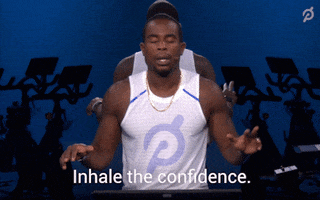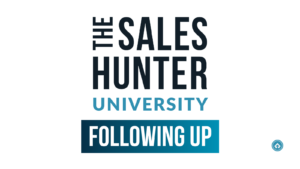Mark Hunter's Blog, page 23
September 29, 2021
10 Easy Ways to Be Successful on LinkedIn
LinkedIn is not only a tool for you to showcase yourself, but more importantly, how others can find you. Of course, LinkedIn has its own search function, but remember LinkedIn is also connected to Google Search. Want to be found by people outside of LinkedIn? You’ve got to do a better job within LinkedIn.
It’s a game changer, and I can’t tell you the amount of business I’ve picked up over the years because people have found me by way of Google Search, which has taken them to my LinkedIn profile.
There are plenty of ways to enhance your presence on LinkedIn. I’ve got 10 easy things you can do right now.
The information in this post comes from an amazing course I just put out in collaboration with the brilliant LinkedIn experts, Brynne Tillman and Bill McCormick. Check it out at The Sales Hunter University.
1. Online connections become online conversations.I want to have a lot of connections. It’s a big, broad playing field out there. But there are certain people in particular that I want to connect with. My goal is to interact with them a little bit in their posts as well as in my posts, message them, and then have an online conversation, a Zoom call, a Teams meeting, or even a phone call with them.
Social media is just that, social. We don’t click and then pitch. We click, create the relationship, and then we look to see where it goes from there.

2. Your ‘About Section’ is about them, not you.
This is not the place that you showcase, “Hey, I made the President’s Award….Hey, I’m a great negotiator.” Do you think customers want to hear that? No, probably not.
Instead, use the ‘About Section’ to share insights or information that is going to help them, and gain their interest so they’re thinking, “I want to connect with this person.”

via Red Table Talk on GIPHY3. Update your contact information.
When I say contact information, I mean your email. Many of you are probably using an AOL email or an MSN or who knows what community college email from way back when. If you want people to reach out to you, put your email out there. Don’t be gun-shy on this, please.
Remember, if you’re in sales, don’t you want people reaching out to you? Of course you do! So in your contact information, make sure you put a real email that people can actually reach you at, as well as a phone number.
Common concerns with this range from, “Oh, I don’t want to be bugged,” or, “I don’t want to put my company’s email, because what happens if I switch companies?” That’s why I recommend you put out a Gmail or another email that travels with you.
4. Optimize your banner.You go to your profile, and above your picture, (and please, have a decent picture) what does your banner say? If you check my LinkedIn profile, you’re going to notice that I’m constantly changing it, because remember, this is a billboard.
If you were putting a billboard on Interstate 95, would you leave it blank? Certainly not, because hundreds of thousands of people are seeing it every day. You would put some prominent, promotional copy up there to draw attention to you. That’s what that banner space is. Use it wisely.
5. Make it a habit.LinkedIn is not something you go to every three to four weeks. However, it doesn’t have to be daily. Some of you can’t afford to be out there daily, I get it.
Try two to three times a week, or even up to five times a week, but be consistent.
Being consistent is going to get you into more conversations, meaning more traction, and therefore getting more people looking at your profile. In turn, it’s going to raise your total awareness and how people see you.
Mark October 13th at 3 PM EST on your calendar for a pop-up webinar all about more LinkedIn selling tips and strategies.
6. Engage with a question.When you make a comment, engage with a question. When you make a post, engage with a question. Invite people to converse with you.
When you invite people to comment, share their opinion, or answer a question, you promote conversations. This is what LinkedIn is all about, it’s a networking event where conversations occur.
What’s more, LinkedIn likes conversations. When they see you engaging and getting a response, they will begin pushing your content out to more people, increasing your exposure.

via GIPHY7. Give, give, and give even more value.
Sometimes people say, “Well, I don’t want to share too much information.”
I disagree. Keep giving, then give some more. You’re developing your reputation, and when we are seen as people who give and give and give, it’s amazing how people say, “Hey, can you help me?”
This is one of the reasons I do videos and blogs like this, or why I do daily LinkedIn videos. I put out so much content because I’m constantly giving, giving, giving. There is a return for what you deliver.
Read more about how to bring more value.
8. Comment, share, and personalize.This isn’t only about you. Comment on other people’s posts. Share other people’s posts. If somebody puts up a good post and you liked it, go ahead and share it. Share it with your followers. Personalize it. Add a comment about it to your post. Give each shared post a little bit of life.
You’re contributing to the ecosystem of the networking environment.
9. Follow experts.Who are the experts in your industry? Maybe you can’t connect with them as a first-level connection, but you can certainly follow them.
You are known by the company you keep, so you want to make sure you’re keeping great company.

via GIPHY10. Give and get recommendations.
Recommendations are great, but do them with integrity. Make sure they’re meaningful. Don’t just throw recommendations out, or ask people who don’t know you.
When I give recommendations, I ensure that they’re meaningful and I expect the same from the recommendations that I get. This helps raise your credibility.

via Rate My Professors on GIPHY
Learn so much more about this topic from the new Mastering LinkedIn for Business course, LIVE at The Sales Hunter University. It is available now, and it is mind-blowing. Brynne Tillman, Bill McCormick and myself worked for several months to put this together.
We have even more wisdom and tips to share with you. Find the complete course here.
Set your calendar for October 13th at 3:00 p.m. EST You won’t want to miss this pop-up webinar on Creating Authentic Social Selling Conversations with Brynne, Bill, and myself. Plus, LinkedIn will be a big topic of conversation. Spots are limited! Sign up now.

via GIPHY
If you’re hungry for more sales knowledge and strategies, The Sales Hunter University is your all-you-can-eat buffet. I put out Masterclasses every month, but there’s a wealth of information you can access through three membership levels. For more information (and I mean a lot of it), click here.
Copyright 2021, Mark Hunter “The Sales Hunter” Sales Motivation Blog. Mark Hunter is the author of A Mind for Sales and High-Profit Prospecting: Powerful Strategies to Find the Best Leads and Drive Breakthrough Sales Results.
FollowFollowFollowFollowFollowFollow
The post 10 Easy Ways to Be Successful on LinkedIn first appeared on The Sales Hunter.
September 22, 2021
Why Prospects Fail to Respond
“It’s not you… it’s me,” might take you back to some terrible high school break up. Every action has its consequeces.
I believe there are seven reasons a prospect could go dark on you. Good news is, there’s something you can do about it.
I talk about this, as well as how to prevent ghosting in this month’s Masterclass. It’s live now, and you can enroll for $59 to learn how to follow up with your prospects like a pro.
1. Failing to see value
If they can’t see the value you’re going to deliver right away, you’re dead in the water.
Too many times you’re pitching your product or your service and they don’t see how it’s going to link to the challenge they have. The value is in the benefit and the outcome that they’re going to receive. I have to make sure that they can understand that clearly, because otherwise the prospect is going to fail to respond.
2. Lack of interest
A lack of interest might be because they’re not the decision maker, or because it’s just not important to them due to everything else going on. Lack of interest might be for any number of reasons, but typically you haven’t made it engaging enough and about them enough yet.
When you involve them, it’s amazing how people will actually remain in communication with you.
“Well, Mark, what if I’m not speaking with the decision maker?” I believe if I can make it about them and I develop enough of a relationship, they will take me to the decision maker.

via GIPHY News on GIPHY3. No new insights
If what you’re sharing is what every other salesperson has been talking about for the last five years, or exactly what they’re already doing as a company, you’ve lost.
If you’re not bringing new information to the table, forget it. And remember, you have to make sure that the information you’re sharing is of value to them. Seek to share things that are of interest and relevance to them.

via Broadway’s Next Hit Musical on GIPHY4. Turned off by sales tactics
Don’t do that slimy stuff. “Hey, let me bounce this email to the top of your list….. Oh, I just want to check in to see how you’re doing…” Please, don’t do stupid things. This turns off prospects more than you realize.
“You must be really busy, I’ve been trying to reach out to you and you haven’t responded, so here’s the email I’ve already sent you five times…” Don’t do that. It may get a response, but it’s not going to go anywhere.
Instead, I want to deal with prospects who are going to turn into customers.
5. Other more pressing issues
What you sell is not the most important thing in their world. On the contrary, they may be dealing with takeovers, acquisitions, competitive issues, regulations–any number of issues. What you have is important, but may not be the most pressing issue.
For example, you may know that you need to lose weight, you need to get in shape. However, you’ve got other more pressing issues that are distracting you from taking care of it. So guess what? You never get around to doing it.

via The Tonight Show Starring Jimmy Fallon on GIPHY6. Timing
Unfortunately, sometimes the timing just isn’t right. You’re reaching out, and what you have is right, but you know what? They have a contractual obligation to another company for another two years …or another year. So you could contact the prospect all you want, but they probably will choose not to respond.
I run into this a lot with many different salespeople that I coach and companies I work with. We have to understand the timing that the prospect is working under, and then we can time our sequence to it.
If you want to expedite your prospecting efficiency ratio, all you have to do is figure out the timing that the prospect is going to be buying under.
Learn more about knowing your prospect and their buying process in my Ideal Customer Profile masterclass.
7. Status quo
What you have is great, maybe even important, but it just isn’t worth the effort.
Let me give you an example. Let’s say you’re an accountant, and you prepare taxes. You’re calling prospects and you know you can do a better job.
But you know what the prospect says? “You know, it’s a hassle to change accountants, I’m going to stay with the status quo. I know, I know you could probably do something better for me, but the status quo is just plain comfortable.”
Unfortunately, that’s where you’re going to stay. I see this happen all the time.

via GIPHYYour follow-up doesn’t have to settle for the status quo. You can take it to the next level, and insert my techniques into your routine. Better follow-up means more sales.
Therefore, this month’s Masterclass could easily pay for itself. Enroll now for $59 and enjoy an in-depth look at this vital part of the prospecting process.
I’ll teach about prospect engagement, and walk you through building the process and executing your plan. Bonus topics include:
Dealing with Multiple People / TeamsOvercoming ObjectionsAcceleration TechniquesAlternate Strategies When All Else FailsDon’t wait, act now! Only one more day of early-bird enrollment that guarantees you an invite to my exclusive follow-up webinar on 9/24.
If you consider yourself a lifelong learner, then The Sales Hunter University is the place for you. You have three different levels to choose from when you become a member. Level 3 packs the most punch, as you get access to EVERY Masterclass, live coaching, monthly office hours with me, plus all the perks of Levels 1 and 2. It’s really a great opportunity to invest in yourself and upgrade your prospecting. Learn more here!
Copyright 2021, Mark Hunter “The Sales Hunter” Sales Motivation Blog. Mark Hunter is the author of A Mind for Sales and High-Profit Prospecting: Powerful Strategies to Find the Best Leads and Drive Breakthrough Sales Results.
FollowFollowFollowFollowFollowFollow
The post Why Prospects Fail to Respond first appeared on The Sales Hunter.
September 15, 2021
What Prospects Want to Hear
I want to equip you with seven things prospects want to hear. Keep these in the back of your mind as you communicate with future customers or clients, and I believe you’ll witness prospects that are more engaged, and more eager to work with you.
Read more from this blog series about how to keep prospects engaged.
Want more content like this blog series? This month’s Masterclass explores the topic of Following Up with Prospects. I share all the Do’s and Don’ts, plus tips to make your prospecting plan go smoothly and end with a successful sale.
1. SolutionsProspects don’t want products or services. What they want is a solution. Spend more time focused on the problem you can solve versus the product or the service you sell.
People don’t want whatever you offer, they want the outcome you can provide them. Zero in on that. That means you’ve got to be listening to them. Take the time to understand what they’re looking for. That’s the way you help them, which remember, is the true purpose of sales.
2. No presentations
Skip the presentation. If people wanted a presentation, they’d go to YouTube, right? And they more than likely will go to YouTube.
It’s death by PowerPoint. Please, skip the presentation. Customers don’t want that.

via GIPHY3. A listening ear
Don’t sit there and pitch me. What I want is a listening ear. I want you to hear me and take the time to understand what I’m saying.

via Bounce on GIPHY4. Keen insights
This isn’t just a broad, general plan. It’s not like “weather talk” at the office. “It’s going to be warm tomorrow… Hey, it could rain.” You want to share keen insights that focus on their industry, or their business. These kinds of observations really don’t come about unless you’ve studied them, and understand them.
How many times have you received a LinkedIn message where somebody wants to connect with you and it’s very obvious they haven’t even looked at your profile. No way you’re going to connect with them. However, you would share with them, and discuss things further if they shared something insightful about the business or industry they’re in.
5. Challenging Questions
Don’t ask stupid questions, ask questions that really challenge their thinking.
Please, don’t sit there and think, “Mark, I can’t do that, this is a prospect I’m speaking to!” I disagree. I want to ask challenging questions right up front. Consequently, if you’re not the right prospect for me, I don’t want to be talking to you.
My time is valuable. For this reason, I’m not going to hesitate to ask questions that provoke some deeper thought on their part.
6. Simplicity
This doesn’t oppose my previous point about questions. Simplicity means don’t confuse. Don’t use wonky words.
You want to be simplistic enough that you share insights that they can understand on their terms.
This is one of the things that people come back to me and say, “Mark, I enjoy your content so much because you speak in a language that I can understand.”
Strive for that same thing with your customers, because your prospects want that. They want simple language that they can understand, not confusing messaging that makes them question if they should work with you.
7. Confidence
Prospects don’t have time to deal with salespeople that aren’t confident. Either come knowing your stuff, or go somewhere else. And don’t come back until you do know your stuff.
This is one of the reasons why I say you have to sell into a very specific vertical. You have to be very focused on knowing who your ideal customer profile is. What are the outcomes that you’re looking for? Because deciding that helps you become more confident, and this is what prospects are looking for.
Read more about what makes a good prospect. Or, check out my Masterclass all about developing your Ideal Customer Profile.
The most valuable asset you have is your own time. The second most valuable asset you have is your customer’s time. Therefore, you better find a way to keep their attention.

via Peloton on GIPHYI get so disappointed when I hear salespeople struggling to find prospects and be able to close deals. You will never have more deals to close than you have prospects to prospect.
If you sit there and say, “I don’t have enough deals to close.” Have you thought that maybe you’ve been prospecting enough, but you have not been following up enough? Do you have the tools to nurture them far enough along to where they become potential customers for you to close?
My Masterclass this month will teach you how to Follow Up with Prospects. I’ll teach you how to keep prospects engaged, execute a plan, and overcome objections. We’ll also explore acceleration techniques when you need to move things along.
In fact, act now and receive an invitation to my webinar in which I’ll share my personal follow-up plan–available only to those who get the course in this early-bird enrollment period!
This course is live now! For only $59 you can become my student and improve your follow-up skills. Check it out.
For the same price, you can enroll in The Sales Hunter University under the Level 3 annual plan and receive every Masterclass–ever! That means my past courses such as Email Prospecting and Phone Prospecting are yours, in addition to all future Masterclasses. Plus, Level 3 offers drop-in office hours for more facetime with me, as well as live coaching every month. It’s an amazing deal and has been transformative for many salespeople. Learn more here.
Copyright 2021, Mark Hunter “The Sales Hunter” Sales Motivation Blog. Mark Hunter is the author of A Mind for Sales and High-Profit Prospecting: Powerful Strategies to Find the Best Leads and Drive Breakthrough Sales Results.
FollowFollowFollowFollowFollowFollow
The post What Prospects Want to Hear first appeared on The Sales Hunter.
September 8, 2021
How to Follow Up with a Prospect
There are plenty of things that prospects like to hear, and can help make your follow-up more effective.
I think we both know the almost impossibility of making a sale on the very first contact. Without compelling follow-up, there can be no sales–and I’ve got seven ways your follow-up could improve.
1. Replay what they say.
This is the easiest one. You may have had one conversation with them and they shared with you one piece of information. So in your next email to them, you play it back. You say, “Hey, I want to talk some more because you mentioned this...” And you write out exactly what they shared with you.
You can put this into a voicemail in the same way. And you say, “I want to find out more about what you’re thinking… I want to build on that.”
Sharing what they said not only shows that you were listening, but that you’re invested in what they think.

via Judge Jerry on GIPHY2. Ask questions.
Prospects will be more inclined to follow up with you if you are placing value and interest in what they share with you.
This is one of the key things I practice in that initial prospecting call. I want them to share with me one piece of information, because if they do, I’m going to run with it. In addition to repeating what they’ve shared, I have a few questions up my sleeve to keep our conversation going.
In fact, it’s good to go into every conversation with at least two prepared questions.
Read more about how to keep prospects engaged.
3. Build on their comments.
I can take what the prospects says, and add value to it.
I may say, “You mentioned this and I want to add some more comments….I want to share some more ideas….. I’m going to share with you some more insights, some more ways of helping people.”
What am I doing here? I’m taking what you say, placing value around it, and building on it.
4. Create scenarios.
This is kind of like telling a story; people remember stories.
You might share with the prospect, “Hey, you shared this and next time we connect, I want to share with you this situation I saw in another company very similar to yours.” You see, I’m creating a scenario that is relevant to them.
“By the way, you mentioned this and I recently saw it in another organization, in the very same situation, and I have some ideas on it.” I’ve shared a story that can peak their interest, and draw them in.

via Better Things on GIPHY5. Risk.
You see, there are two things that are moving people right now. Risk is one of them. People will many times only make a risky decision if they feel it’s risky if they don’t make a decision. So you have to start talking risks.
“Well yeah, we can forgo this conversation, but with these changes, it is going to impact other things.” Or, “Because of what the competition’s doing, here’s what’s going on… You see? So you run the risk if you don’t make a decision.”
Urgency can be a crucial component in follow-up and maintaining prospect engagement.
I may say, “It’s really important for us to be able to talk right now because of the urgency of the supply chain…or there are issues with this…” It could be any number of things. Whatever it is, you create urgency.

via Alpha on GIPHY7. Have a clear Call to Action.
Don’t leave things vague. We’re going to follow up on this in this way, on this day and at this time. Be very specific. How and when will you connect next time?
Prospects don’t want to be left hanging by salespeople because honestly, they’ll just go someplace else. Or, they’ll choose to make no decision at all.

via GIPHY
This month’s Masterclass will dive into this topic of Following Up With Prospects. I’ll cover everything from why prospects fail to engage to avoiding ghosting and accelerating the process. There’s so much more! Check out the course contents here.
The course is live for $59! It’s an incredible bargain for everything it can add to your prospecting.
Enroll now and receive an exclusive invitation to my webinar detailing my personal follow-up process that has brought me success for years.
If you’re interested in more prospecting and learning, I can’t recommend enough The Sales Hunter University. Choose Level 3 membership and never miss a Masterclass–because they’re all included! Level 3 is awesome because it gets you face-to-face time through open office hours with me, and a variety of other things you get to participate in.
Sounds good, right? Find out more here.
Copyright 2021, Mark Hunter “The Sales Hunter” Sales Motivation Blog. Mark Hunter is the author of A Mind for Sales and High-Profit Prospecting: Powerful Strategies to Find the Best Leads and Drive Breakthrough Sales Results.
FollowFollowFollowFollowFollowFollow
The post How to Follow Up with a Prospect first appeared on The Sales Hunter.
September 1, 2021
How to Keep Prospects Engaged
If after the initial contact you lose sight of the plan, you could lose everything. And you can’t afford that.
Cultivating a relationship with a prospect involves time and effort. But there are some simple ways that you can grab their attention, and maintain engagement.
1. Ask the unexpected.
Too many times if you ask canned questions, they lose interest in you.
By asking them an unexpected question, you can truly get them thinking.
Successfully engage with them at a much higher level and the conversation–even the relationship–will change.

via Paramount+ on GIPHY2. Involve more people.
Why are you just talking to one person at that company you want to do business with? Be talking to four or five.
If you want to keep the prospect engaged, get multiple people participating. Spread your tentacles throughout the organization.

via Nature on PBS on GIPHY
3. Schedule meetings with a purpose.
Don’t just schedule meetings haphazardly.
“Oh yeah, let’s get together next week at two o’clock, or 10 o’clock, whatever it might be.”
That does you no good. Schedule meetings with a very precise purpose, so they know the intent, and that they’re going to be challenged on their thinking. This comes back to the whole idea of having a clear Call to Action.
Read more about Does My Call to Action Engage the Prospect?
4. Ask for their opinion.
Opinion is one of the most beautiful words. People always want to share their opinion.
What I love to do is ask: “Well, what’s your opinion on this? Let me get your insights on this…I want to understand more clearly how the industry’s moving and what you think about it.”
When you ask for their opinion, don’t just ask for their opinion on your product. That’s stupid. Ask for their opinion on something bigger within the industry, within their supply chain, within the whole scope of things. In fact, when you start placing value in what they’re sharing with you, it’s amazing how much more information they’re going to share with you.

via Late Night with Seth Meyers on GIPHY
5. Share industry insights.
If they see you as part of their industry, as part of their world, they’re going to be much more receptive to staying engaged with you. They are certainly going to be much more receptive to talking with you.
If you just talk in general terms, it’s irrelevant. But if you start using the vocabulary, the language, and talk about the issues that are happening in their world, it can make a big difference.
6. Answer their questions.
This is so obvious, but what I love about this is they may share something with you in your first call. Then, you come back and say, “Hey, let’s get together. I want to talk. And I got some answers to those questions you had…and that question that you asked prompted me to think of some other questions that we should really address. I want to get your opinion on that.”
You’re valuing them and you’re keeping them in the loop.

via CBC on GIPHY7. It’s not about you.
Never start a call talking about yourself, or your company. It’s not about your achievements, or those of your company.
However, it’s okay to say, “Hey, I’ve seen this before.” Or, “I’ve been able to deal with other companies similar to yours with the same challenge.” It’s okay to say these kinds of phrases, because that’s a confirming statement.
However, it would be very different to sit there and say, “Oh well, we’ve been in business for 65 years and we’ve done this and we’ve done that.” Who really cares? They can go out to your website to see that.
8. Use subject matter experts.It’s okay to offer a confirming statement–and that’s it. Focus more energy and time listening, asking questions, and having a conversation.
I love using subject matter experts. Suddenly, you’re not just a salesperson, but you’re bringing in other people.
You set up a follow-up call and you say, “Hey, I’m going to bring in ‘so-and-so’ from our labs or this tech person, and they’re going to share some additional insights with you.” Then, invite them to bring in other people.
What does this do? This makes the meeting seem more important. This makes the meeting more valuable, because you’re going to get more input.

via ABC Network on GIPHYThere are any number of ways to keep the prospect engaged.
This month features a masterclass on how to keep prospects engaged through follow-up. It will go live on September 10th! Content from this blog comes straight from that course. There’s a ton of content in there. I want you to grab it and watch your engagement grow.
There’s always great Masterclasses available at The Sales Hunter University. Last month we did Prospecting Using the Phone. Did you know that Level 3 – All Access members can access any Masterclass, past, present, or future? It’s an amazing benefit in addition to the live coaching, weekly emails, and drop-in office hours. Check it out here.
Copyright 2021, Mark Hunter “The Sales Hunter” Sales Motivation Blog. Mark Hunter is the author of A Mind for Sales and High-Profit Prospecting: Powerful Strategies to Find the Best Leads and Drive Breakthrough Sales Results.
FollowFollowFollowFollowFollowFollow
The post How to Keep Prospects Engaged first appeared on The Sales Hunter.
August 25, 2021
How to Build a Phone Prospecting Campaign
If you’ve been following this blog series, you’ve learned some best practices for phone prospecting, as well as mistakes to avoid on the phone. Last week I shared some shortcuts to make things more efficient for you. You’ve got a great foundation, but now it’s time to build the structure of your phone prospecting campaign.
Having a campaign means you have a plan and you know how to execute it. You’re ready to get out there, and you’re ready to win. Are you ready?
1. Have a cadence.
A cadence is your strategy, your plan, your process. Cadence means you don’t make calls on a whim without a game plan. You’ve thought it through. You have answers to these questions:
What is the number of calls I’m going to make? What’s the frequency of the calls? What’s the messaging? Which elements will all come into play? (Email? Social media? etc.)And once I build that cadence, I stick with it. This is the blueprint.
You would not build a house without having architectural plans. Same thing with your prospecting plan. You want to make sure you have your design laid out.
Interestingly, when you look at an architectural design for building your house, there’s always one image of what it will look like when completed. It’s the same for your phone prospecting cadence–you’re crafting in your mind what a successful phone call is going to look like.

via The Explainer Studio on GIPHY2. Know your ICP.
Remember, ICP means Ideal Customer Profile. I can’t stress it enough. Too much time is wasted by making phone calls or trying to reach people who do not line up with your ICP.
The tighter the target is around your ICP, the more successful you’re going to be.
If some of this language is foreign to you, I really recommend my Masterclass all about Ideal Customer Profiles. There is so much to learn, and I’ll walk you through, step by step, creating 1-2 profiles that will help you focus your prospecting efforts more effectively. Find it here.
3. Include a CTA.
What’s your CTA? It’s a call to action. When I call you, this is what I want the next step to be.
The next step might be just to get an appointment, because I’m calling you, but I’m interrupting you. You probably don’t have time for me. So the next step might be as simple as that. The next step might be, if you’re in a short sales cycle, to actually get the order.
Likewise, the next clear ‘call to action’ might be to have you sign up for this webinar where I’ll be participating with you.
You can have any number of CTAs. The goal is to be clear and succinct with it, as part of an advanced call strategy.
I might also have a primary CTA in addition to a secondary CTA. In other words, the primary CTA might be the appointment. “Hey, let’s talk tomorrow at 10:00 AM.” If I can’t get that, then my secondary CTA is “I’m going to send you an email,” or, “Would you go to this website, download and take a look at this, and let me know what you think.”
Honestly, that’s a weak secondary, but sometimes I can’t get the primary. So at least by having you look at something and give me some feedback, I can monitor whether or not you actually did it. Finally, what does that do? That gives me insight as to how engaged or how involved you might be in this process.
4. Use time-blocking.
You’ve got to set aside the time. Choose to view time spent prospecting as an investment that will bring future gains.
Think about this: You don’t get a gym membership and think you’re going to be in shape. The gym membership becomes valuable when you actually go into the gym and work out. And that means you have to dedicate time to it.
Time-blocking is absolutely essential in terms of building your prospecting campaign. If you set aside the time, you’re setting yourself up to see results.

via Much on GIPHY5. Have goals.
My goals might be the number of calls I intend to make today. Or perhaps, this is the number of prospects that I ultimately want to turn into customers.
You want to inspect what you expect. So if your goal is to make X number of calls a day, then you set that goal. By simply thinking it through and putting your mind to it, you’re much more likely to achieve it. It’s amazing how it happens.

via STICK TO SPORTS on GIPHY6. Prepare talking points and statements.
Be very clear about the talking points you’re going to share, and when to share them. Of course, there are certain talking points that you may use earlier in a phone call and talking points that you might use later in a phone call, if that call is going well.
Be clear and courageous, because it allows you to exude confidence, and in turn garner trust from the person on the other end. Your confidence makes them more likely to share information with you.
7. Have some questions.
I don’t start the call off by asking dumb stuff. I start the call off by asking insightful questions that are going to engage you. But that means I have to be prepared.
Be prepared with questions that are relevant to their industry, to who they are, to their business.
In fact, it all comes back to that ICP. The clearer the ICP is, the more insightful your questions are going to be, and the more insightful your statements are going to be.
8. Know some objection responses.
There are always going to be typical objections that you hear, and you want to be very sure of your response. Have you thought it through? So you don’t get caught off guard, you should prepare how to respond.

via GIPHY
One of the most typical ones is, “Why don’t you just email me some info and I’ll take a look at it and I’ll get back to you.” What’s your response?
I might suggest something such as: “We’ve got a lot of information we could share with you. If you could just answer two questions for me, I’ll be able to understand better what to send you now.”
Now what am I doing with that statement? I’m engaging. I’m trying to get you past this block to actually pull you in, if even just a little closer. Hopefully, if I do a good job asking two questions that engage, I can go to 3, 4, 5, 6, and I get to have a conversation. I want to be able to have a very clear, articulate response with every type of objection.
Read more about overcoming objections.
9. Check out The Sales Hunter University.
I want you to be successful with your phone prospecting. That’s why I’ve created a Masterclass that covers everything from basic strategy to the nitty gritty.
Today is the LAST DAY to be part of our early-bird special. Enroll in Phone Prospecting: How to Warm Up That Cold Call and receive an invite to my exclusive webinar on 8/26 where I share my personal strategies.
There is so much packed into this course. It’s only $59, and you get a 33-page workbook with actionable steps, 14 training videos taught by myself, and an added bonus of 19 prospecting call and voicemail scripts. Take the guesswork out of your phone prospecting, and get this course today.

Are you ready to dive into more Masterclasses, such as last month’s Ideal Customer Profile course? Consider enrolling in The Sales Hunter University as a Level 3 ‘All Access’ member and receive access to all Masterclass offerings, in addition to live coaching, and available drop-in office hours with me.
Copyright 2021, Mark Hunter “The Sales Hunter” Sales Motivation Blog. Mark Hunter is the author of A Mind for Sales and High-Profit Prospecting: Powerful Strategies to Find the Best Leads and Drive Breakthrough Sales Results.
FollowFollowFollowFollowFollowFollow
The post How to Build a Phone Prospecting Campaign first appeared on The Sales Hunter.
August 18, 2021
Phone Prospecting Shortcuts
I wouldn’t be sharing these tips every week if I didn’t feel I could really help you. I’ve gleaned this, and I’ve perfected these shortcuts over years and years of working with salespeople, and helping them phone prospect more effectively.
I’m sharing them with you here, and there’s a whole lot more in this month’s Masterclass, Phone Prospecting: How to Warm Up that Cold Call. I cover everything from best practices, to voicemail, to combining the phone with email and social media. See the whole table of contents here and enroll today!
1. Use a cadence.
A cadence is the number of times you’re going to be reaching out to this person. A cadence focuses on how you’re going to do it, when you’re going to do it, and how you will combine it with other mediums. In terms of email, or in terms of other messaging techniques via social media– think about: What will the messages be?
2. Leverage Fridays.Establish a clearly defined process that you’re able to stick to and follow through on.
Fridays are an absolutely great day. I’m releasing this post in the middle of summer. Let me tell you something, Friday afternoons in the summer are a great time to be prospecting because people are more laid back, definitely a little more relaxed. It’s amazing the number of conversations you can have.
Don’t think for a moment that Fridays are not a day for you to be prospecting. This is a great shortcut, and it’s going to shoot you ahead of your competition, because they’re not doing it on Friday.
“Oh, nobody wants to talk to anybody on Fridays.” I think once you try it, you’ll find that statement to be untrue.

via SLOTHILDA on GIPHY
3. Follow up fast.
Several years ago, the technique would have been that you call, and then maybe a day or two later, you leave an email. Not anymore. Speed sells, and time has shrunk even more.
When I say follow up fast, I mean, I’m on a call and I’m going to email within a two-hour period. You want to be fast. Why? Because speed sells. And the cadence, what I talked about earlier, is also built upon who you’re prospecting, what they’re buying, and all the different variables that go into play.
What do I mean by this? There are some industries that you may be following up fast by calling them literally every day. There may be others that you’re reaching out to every week. There may still be others every other week.
You’re going to follow up fast based on the industry you’re selling to, the type of person you’re selling to, and a wide range of other things.
I’ve got another masterclass out in my program called ICP, Ideal Customer Profile. That is a great masterclass to help you determine what your frequency should be.
 4. Use with email and social media.
4. Use with email and social media.
I’m amazed at the number of people that use email and social media, but they fail to use the phone. They’re missing out on a powerful tool!
Put the phone in with email and social media, and it’s amazing how much more effective the other two become. This is the cadence that I use, because each of those methods is important.

via GIPHY
5. Focus on your ICP.
You want to make sure that every call you make is zeroed in on your ideal customers. Don’t waste time calling people who aren’t your targeted prospects.
Know the tighter you have your ICP (Ideal Customer Profile), the more effective, more efficient, and the quicker you’re going to be in terms of making the phone work for you.
Read more
about what makes a great prospect.
What are your distinct, clear talking points?
I always say I want to have three questions and two statements ready for this ICP.
That way, when I’m calling people in this ICP, this is the set of information I’m using. I’m clear, I’m articulate, and I can communicate with confidence. It’s impressive how much faster I can get into a conversation.
7. Schedule calling blocks.If you don’t schedule a time to prospect, it’s amazing how you just won’t prospect. Other things get in the way.
Because it’s not like you wake up in the morning, and say, “Man, I’m great. I want to be prospecting.” There are very few people that are wired that way. Instead, ask yourself these questions:
What are the times of day?
What are the days of the week?
What are the periods that I’m going to set aside?
Be absolutely adamant, and make sure your prospecting happens during that time. Honor your commitment to yourself.

via NETFLIX on GIPHY
Learn more about this topic from my previous two blog posts, Phone Prospecting Best Practices and Phone Prospecting Mistakes to Avoid.

If you’re reading from a script during sales calls, you’re selling yourself short. My new Masterclass will give you the tools and grow your confidence to get you ‘off script’.
Scripts are meant to be guides, a sort of inspiration, and yes I include some for conversations and voicemail in the workbook for this course.
But I’ll also walk you through working with call gatekeepers, overcoming objections, and engaging your customer in the first five seconds of the call.
You’re not a robot, and those calls don’t have to feel so cold. Let’s warm up that call, and move to conversations between two human beings. For just $59, this course is an amazing deal for everything it can do to impact your sales.
Enroll now and receive an invitation to my early-bird exclusive webinar on 8/26 just for those who buy this course first. I’ll share my personal phone prospecting plan.
Check it out at The Sales Hunter University, and enroll now!
Copyright 2021, Mark Hunter “The Sales Hunter” Sales Motivation Blog. Mark Hunter is the author of A Mind for Sales and High-Profit Prospecting: Powerful Strategies to Find the Best Leads and Drive Breakthrough Sales Results.
FollowFollowFollowFollowFollowFollow
The post Phone Prospecting Shortcuts first appeared on The Sales Hunter.
August 11, 2021
Phone Prospecting Mistakes to Avoid
But I believe that equipping yourself with the right tools can change not only your outlook on prospecting, but also your results.
In my previous blog post from this series, we focused on great things to practice on a prospecting call. But I can’t stop there, I have to share ten things you must avoid in order to see more progress in your prospecting, and eventually more profit.
Are you learning a lot from this blog series about phone prospecting? I can’t recommend enough this month’s Masterclass: Phone Prospecting: How to Warm Up That Cold Call. I’m only scratching the surface here on the blog, but we really dive into the topic through the videos and workbook. Check it out, here.
1. Bad opening lines
Let’s all cringe together. “Hey, how’s the weather there? How was your weekend? How’s your day going?” Those are lame lines and they tell the other person you’re a salesperson and you’re really afraid to make the call.
Another bad one, “Just checking in.” No, I’m not a hotel. Don’t ask if I have a room available, because that’s what you’re saying with “Just checking in.” You want to come at them with an articulate line that’s going to engage them. Need more details? Keep reading.

via Hyper RPG on GIPHY2. Unsure of your CTA
CTA is a Call to Action. Make sure that you have an explicit call to action. What is the one thing you want that person to do as a result of the phone call? You have to be clear going in, and that’s what you’re guiding and directing your phone call to.
3. Failing to engage
Too many salespeople call somebody up and then do all the talking. That’s just a listening tour for the prospect. They’re probably not interested. They’re going to hang up on you.
4. Stopping with the gatekeeperYou have about five seconds to engage the prospect. Failing to engage is a recipe for being disconnected very quickly.
Gatekeepers often say, “I’ll give them your information and if they’re interested, they’ll call you.” You know they’re never going to call you. So why are you quitting there?
You don’t stop with the gatekeeper. You find other avenues to work around the gatekeeper, and you start by viewing them not as such, but rather as the door opener.

via Texas Archive of the Moving Image on GIPHY5. Bad voicemails
Just the other day I got a voicemail from a salesperson trying to sell me something and it was one minute and 37 seconds long. What’s worse was he gave me his whole sales pitch right there. Believe me, I didn’t listen to it. I only listened to a few seconds of it because I saw it was a minute and 37 seconds message. Forget it, it’s gone.
6. Failing to ask questionsYour voicemail must be short, tight, articulate, and 12 to 16 seconds long.
If I want to engage the prospect, I have to ask them questions. It’s best to go into your prospecting call with prepared questions.
7. Making it about youIf you’re not ready to ask them some questions, then they’re not going to be ready to answer.
Of course, when you call somebody, they’re not expecting your call. The last thing they want to hear is how great you are, or how great your company is. In reality, they have their own challenges, and their own needs. Do not make the call about you. The customer’s not interested in you. They’re interested in their own problems, their challenges. Focus on how you can help with those.

via The Masked Singer on GIPHY8. Failing to follow up
Chances are, making one phone call isn’t going to be successful. You must persevere through a continuous number of phone calls to be able to finally have a conversation with the person.
Just because you’ve called twice, don’t think, “They must not be interested.” You don’t know until you’ve had a conversation with them. And even after you’ve had a conversation with them, you may not have enough of the criteria to determine whether or not it’s a “yes” or “no”.
Want to know more about this criteria, as well as overcoming objections? Check out this month’s Masterclass.
9. Failing to combine with email
The phone works even better when you use it in conjunction with email, and vice versa!
It’s amazing how a rising tide lifts all boats. I want to marry the phone call and the email within about a two hour window. Short, tight, quick; speed does sell more than ever right now.
10. Bad attitude
That sinks more salespeople, because if you have a bad attitude going into the sales call, I guarantee you’re not going to get the results you’d hoped for.
Find a positive attitude going into it, or there’s little chance of you ever being successful.

via GIPHYI know that these strategies can change your routine–and your results–immensely! Check back for more posts this month, or join our email list so you never miss a thing.

The phone is still the best prospecting tool. However, certain practices can render it useless. I want to help you make calls that are meaningful, productive, and profitable.
My new Masterclass, Phone Prospecting: How to Warm Up That Cold Call, is just $59 and will help you achieve just that. I’ll coach you through the best time to call and how to engage the prospect in the first five seconds. I also discuss getting around the gatekeeper, and handling objections.
What’s more, I’ll help you create a call to action that will confirm the next step.
As an added bonus, I’ve included pages of scripts for the phone and voicemail to guide you.
This course is a HUGE value. Sign up now, and receive an exclusive invitation to my webinar on 8/26 where I share my personal phone prospecting plan.
We’ve had some huge Masterclass courses that have been met with great success this summer. Remember, when you become a Level 3 member of The Sales Hunter University, you get access to every Masterclass, past, present, and future!
There’s a reason we were voted a Top 10 sales development platform. Learn more here.
Copyright 2021, Mark Hunter “The Sales Hunter” Sales Motivation Blog. Mark Hunter is the author of A Mind for Sales and High-Profit Prospecting: Powerful Strategies to Find the Best Leads and Drive Breakthrough Sales Results.
FollowFollowFollowFollowFollowFollow
The post Phone Prospecting Mistakes to Avoid first appeared on The Sales Hunter.
August 4, 2021
Prospecting Using the Phone
The phone has not gone out of style. I still think it’s a great tool for prospecting and really connecting with people. I’d like to share ten strategies so you can use the phone and see results.
1. Use it.
That’s right, you can’t be good at something you never practice. One of the biggest differences I find between those who have success with the phone and those who don’t is they simply aren’t using it.
The telephone is like a muscle, and you’ve got to use it enough to strengthen it and get into a repetition.

via GQ on GIPHY2. It’s all about the first five seconds.
The first five seconds of your phone call is what’s going to determine whether or not that prospect is going to engage with you.
When you sit there and waste time by saying, “Oh, how was your weekend? How is the weather there?” Those questions aren’t fooling anyone. You’re telling them that you are a salesperson, and you’re trying to bug them. You may think you’re softening them up, but in actuality you’re turning them off.
Don’t use opening lines. Instead, that first five seconds is all about engaging the prospect. How? Keep reading.
3. Engage the prospect.
Make it about them. You’ve got to engage them with a question or a statement that is going to be relevant and pertinent to them.
Ask yourself, “Am I bringing something of value to this prospect?”
Aim to bring new insight to your prospecting calls. That means doing your homework, and, at times, educating yourself in a specific area.
Read more about bringing value to each conversation.
4. It’s not about you.Making your call about them goes hand in hand with taking yourself out of the picture. You are not the star of the show on this call.
When you start the call by touting your own successes, “Oh, we’ve done this…We did that,” it becomes too much about you.
Of course, that’s a ‘confirming statement’, and that’s fine. But it does not come in the first 15 or 20 seconds of the phone call. You have to set yourself up to earn the right to share those kinds of statements. But don’t come right out of the chute sharing that.

via Lifetime on GIPHY5. Use voicemail.
Careful! Don’t use voicemail to give them enough information to make a decision without you. You use voicemail to create interest.
Now, are they going to call you back? They’re not going to call you back, you know that. But what you’re doing is leaving a significant nugget of information so the next time you connect with them, they may just take your call.
6. Be prepared with three questions and two statements.
If you want to engage the prospect on your next prospecting phone call, try a series of questions. That means you’ve prepared things you can ask, as well as some statements that you can share. Be sure that all questions and statements are pertinent to them, and engaging, too.
What does this do? This helps give you the confidence that you will be able to carry on a conversation with them. If you only have a defined script and that’s all you’re working from, you’re going to run out of things to add to the conversation. In addition, you’re never going to develop confidence.
You may have a script to give you ideas and prompts, but it’s all about having a genuine conversation, and listening to their needs.
7. Your personality.
Your personality has to come through in that phone call. I’m not saying you need to be off-the-chart exuberant, but use your unique personality. I show my personality each week through Youtube videos, sharing with you via this blog, and other social media. It’s helping you to stay engaged with me.

via The Office on GIPHY8. Follow up.
You’ve got to have a follow-up process because you know it isn’t going to happen with one phone call. It isn’t going to happen with one voicemail, or one email.
Prospecting using the phone includes having a follow-up process, a regular sequence that you can replicate. You build out a cadence, find your flow, and stick to it.
9. Frame of mind.The mindset you have going into the call is going to determine what you get coming out of the call.
I’m always amazed. I can take a salesperson who has a great attitude. They will always have much better sales results using a phone than the person who may have the skill, or technique, maybe even all the talking points, but don’t have the right attitude.
I want the person with the right attitude because here’s what happens: you listen better, you engage better, and the other person knows that.
Besides, if you were on the other end, would you want to be talking to a wall, or would you want to be talking to a human being? I think you want a real, engaging person. Can you be that person? It all starts in your mindset.
10. Don’t stop.Let’s not kid ourselves. You can have hours, days, even weeks where phone calls aren’t going anywhere–but don’t stop. Don’t give up, because you can also have periods where you’re having incredible success on the phone.
I feel I’ve saved the best point for last. This is so important.
I see a lot of salespeople throw in the towel. They make a couple phone calls and then stop. They either call a person once or twice, and don’t reach them. Or perhaps the first call didn’t go spectacularly. They might say, “They must not be interested.” No, don’t stop!
Or they may call a hundred people on their prospecting list, but not get the results they want, so they stop. Either way, don’t check out. Keep it going.

via Peloton on GIPHY
I challenge you to apply these strategies to your calls this week. Set some goals of how many calls you want to make today, or before Friday. Write it down, keep these tips in mind, and take your prospecting game to the next level.

I like to share tips and basic strategies with you here on my blog, or on my Youtube channel, but where we really dive in is at The Sales Hunter University.
Members get access to an immense amount of content through email, videos, and courses. Choose Level 3, and get unlimited access to every Masterclass I’ve ever offered. Plus live coaching and office hours with me!
This month’s Masterclass offering is all about Phone Prospecting, where I go in-depth on the strategies I’ve shared here, and so much more. I’ve even included some conversation scripts and voicemail scripts as helpful guides.
Head on over to The Sales Hunter University to check out all it has to offer. You and your sales goals will definitely notice a difference once you do.
Copyright 2021, Mark Hunter “The Sales Hunter” Sales Motivation Blog. Mark Hunter is the author of A Mind for Sales and High-Profit Prospecting: Powerful Strategies to Find the Best Leads and Drive Breakthrough Sales Results.
FollowFollowFollowFollowFollowFollow
The post Prospecting Using the Phone first appeared on The Sales Hunter.
July 28, 2021
Taking the ‘Cold’ out of Cold Calling
There’s a special level of dread that many people experience with prospecting calls, both the salesperson and the customer.
I know that it doesn’t have to be that way! There are tools and tips you can use to warm up that phone call.
It doesn’t have to feel cold, and there are steps you can take to use the phone more successfully.
1. Know your ICP.
ICP is Ideal Customer Profile. This allows you to focus your time and your effort, all your resources, everything that you do toward a very small focus group.
I encounter this all the time with salespeople. They’re trying to sell to the world. They’re trying to sell to the Western hemisphere, or North America. Stop right there. I want you to focus on a small slice.
When you have an ideal customer profile identified, it’s amazing how much more effective you are, because you understand your outcomes. You’re more confident with your messaging. You are able to have conversations much sooner than anybody else would because you know these people.
Why? You’re speaking to your people, to your audience!
Read more about what makes a good prospect.
2. Have a social media presence.When you reach out to people, you really want them to know who you are because they’ve seen you on social media, or elsewhere on the internet.
This does not mean that you throw your whole life savings or company assets into developing social media. It just means have a footprint out there that speaks highly of you.
It’s one of the reasons I put YouTube videos out weekly, because it allows people to get to know me before they choose to engage with me. I’m actually practicing this right now because we have people who engage with us and say, “Oh yeah, we’ve watched your videos. We know who you are.”

via GIPHY3. Have a purpose for the call.
It is never about, “Hey, I just want to see if you want to buy.” Instead, having a purpose for the call means you’re always calling with some intention.
“Hey, I’ve got new information on this……. I’ve got some insights I can share with you…….. How are you handling this?” I always want to engage.
When you’re focused on your ICP, you always have that information because you pay attention to the needs of that targeted group, and you anticipate those needs. You are part of the family, part of the group.

via GIPHY4. Know your prospect.
Depending on what you sell, you may take anywhere from 30 seconds to five minutes to do research on that prospect before you call them. You’re checking them out on the internet just as they’re checking you out on the internet.
When you know your prospect, it ups your game.
Even if you are reaching out to people who fit your ideal customer profile, there’s still individual information you want to get. It doesn’t take long. It takes 30 seconds to a minute and I can come up with two or three pieces of information that are going to help me understand and connect with them at a deeper level, faster.
5. Stay focused.It is so easy to get distracted. Squirrel! Shiny object! But you have to stay focused.
One of the challenges salespeople have: it’s an emotional business. Therefore, they allow themselves to get distracted very easily.
“Look at that! A lead over there!” Yeah, but it doesn’t fit your ideal customer profile. Don’t chase it.
“Oh, they mentioned this. Maybe I should go look at it.” No, stay in your competency area.
Read more about how to make prospecting less stressful.

via GIPHY6. Play the long game.
When I’m reaching out to people, I have to be prepared that it may take six, or even sixteen times before I reach you. Each message I bring you is going to be different.
Nonetheless, I know I can help you because you fit my profile. In fact, I’ve helped other people just like you, so I know I can. As a result, I owe it to you to get in touch. I actually owe it to you. If we don’t engage, I’m actually doing you a disservice because I have the ability to help you.
Think about this for a moment. If you had an issue that you wanted fixed, and there was somebody who could help you, wouldn’t you want them to reach out to you? I bet you would.
7. Have the right mindset.Playing the long game means communicating purposefully and persistently because you hold their solution in your hands.
The mindset I take to prospecting is this:
Each conversation I have, I want to earn the right, the privilege, the honor, and respect to be able to talk with you again. I want to be able to impact and influence as many people as possible. My goal is to help you see and achieve what you didn’t think was possible.When I stay focused on those three things, it’s amazing how much better I am, because I stay in the game. I stay focused. I’m no longer cold calling–I’m practically hot calling because I’m calling very specific people who I know I can help.

via CBC on GIPHYI want to help take the pain out of the prospecting process.
This post is just a glimpse into the variety of content at The Sales Hunter University. I have three levels of access for you to choose from.
There’s a higher level of prospecting and sales success that you’ll be able to achieve. But, you’ve got to get enrolled in The Sales Hunter University.
Want to aim higher? Level 3, All Access gives you live coaching and drop-in office hours with me. I’d love to help you on a more personal level.
All Access also gets you access to every Masterclass I have offered, or will offer in the future! I just did a Masterclass specifically about Ideal Customer Profiles! Next month we’ll focus on Phone Prospecting!
You’ve got to check out The Sales Hunter University for yourself!

Copyright 2021, Mark Hunter “The Sales Hunter” Sales Motivation Blog. Mark Hunter is the author of A Mind for Sales and High-Profit Prospecting: Powerful Strategies to Find the Best Leads and Drive Breakthrough Sales Results.
FollowFollowFollowFollowFollowFollow
The post Taking the ‘Cold’ out of Cold Calling first appeared on The Sales Hunter.
Mark Hunter's Blog
- Mark Hunter's profile
- 25 followers





